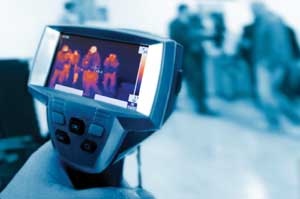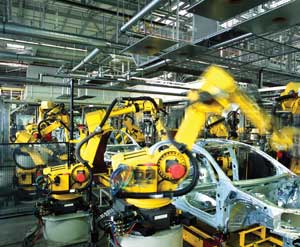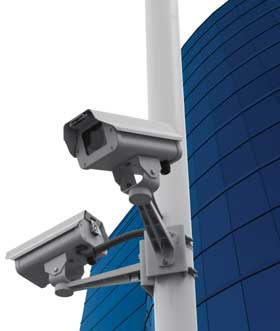Andreas Breyer, Europeon Machine Vision Association
The European machine vision industry is experiencing a solid recovery from the economic downturn.
Good news: The European machine vision industry recovered from the crisis of 2009 a while ago, and its overall forecast remains positive. Such are the findings of the European Machine Vision Association (EMVA) as outlined in its most recent annual survey titled European Vision Technology Market Statistics 2011. Furthermore, according to the companion report on specific countries, which for the first time includes France, the French market is significantly bigger and more dynamic than was originally expected.
Ranking second after Germany, the French vision market was found to be much more dynamic and multifaceted than was initially expected, with a greater number of active companies and industries served than predicted. For vision suppliers in France, the domestic market is much more significant than it is for Germany or Italy, and only a handful of companies are truly export oriented. Compared to the rest of Europe, France has a stronger focus on the defense and avionics sector.
Machine vision trends
The borders between smart cameras, compact systems and vision sensors have become increasingly blurred, and we expect a growing demand for two categories of machine vision products: compact systems for low-cost applications, and systems that replace PC-based solutions. Simpler vision systems will find new applications and lead to further miniaturization of machine vision products.
As LED lighting systems become miniaturized and their applications become more large-scale, their energy efficiency is steadily improving. Variable daytime light conditions, along with unstable weather, create a need for robust systems and, in terms of software, algorithms that can compensate for these fluctuations.

Thermal imaging and near-infrared solutions are needed in a growing number of applications, primarily in nonmanufacturing sectors.
Increasingly, the machine vision sector is trying to meet industry’s demands for complete solutions. This implies the seamless integration of systems from the very start of the production facility’s planning process. Sensor fusion will gain in relevance in future vision systems; that is, to a much larger extent, they will combine input from multiple sensor channels, as well as nonoptical sensor data.
The movement toward 3-D applications represents a strong trend in itself, covering metrology and various types of inspection applications. Nonindustrial customer segments such as intelligent traffic systems, security and surveillance are still seen as strong buyer groups. Here, thermal imaging and near-infrared solutions also are needed in a growing number of applications, mainly nonmanufacturing. For production processes, 3-D technology will play an increasing role in the smart camera and sensor sectors where height, shape or volume is of importance.

Cosmetics producers have become bigger and bigger buyers of machine vision systems.
Industry dominates
With the worldwide economic upswing and last year’s increase in industrial production, the demand from traditional industrial customers for machine vision technology has sharply increased. Sales of vision systems to the automotive industry, the largest customer sector, saw the greatest rise. High double-digit growth rates were achieved also with system sales to the pharmaceutical and cosmetics industries, the electrical and electronics industries, the packaging industry, the rubber and plastics industries, and the medical device manufacturing sector.

The automotive industry has been the largest customer sector for machine vision systems.
However, absolute sales to the nonindustrial sector remained almost stable and lost ground only in the relative share of total turnover, a clear sign that vision technology providers with roots in traditional industrial production have cemented the nonmanufacturing sector as an important business area.
As in previous years, sophisticated vision systems and cameras had the largest share of absolute turnover. Among all products, cameras also had the greatest turnover increase. However, all product types managed double-digit sales increases compared to 2009 figures. Inspection of piece parts remained the dominant application for machine vision systems again last year, while the share of continuous inspection (web inspection) of total system turnover declined somewhat. This sector ranked third in importance after 3-D metrology.

Industrial cameras are going strong, but so are nonindustrial customer segments such as intelligent traffic systems, security and surveillance.
Growth in 2011
The automotive industry’s significant upswing last year, and the relative resilience of industries such as pharmaceuticals and food to economic fluctuations, indicate that traditional customer industries will remain the backbone for turnover of vision technology companies in Europe.
The turnover of machine vision in nonmanufacturing sectors, with their sheer unlimited application possibilities, will rise again this year. However, with the capture of new industries outside manufacturing, a number of new companies that do not have a history in industrial imaging but directly address the new markets can be expected to enter the market.
Shared by practically all existing machine vision applications is their ecofriendliness, which benefits companies as they strive to maximize profit while remaining competitive in a “green”-oriented world. Climate change, a growing world population and urbanization are three megatrends humankind is facing today, and “green vision” solutions already contribute substantially to tackling these issues.
After a growth rate of 34.8 percent in 2010, EMVA expects that in 2011 the positive trend will ease down somewhat, preventing the industry from overheating. However, growth will remain dynamic and reach 20 percent.
Meet the author
Andreas Breyer is director of market research at the European Machine Vision Association in Frankfurt, Germany; e-mail: [email protected].
Taking stock of the vision market
Data for the report came from 225 companies in the European machine vision industry. It was collected primarily from a questionnaire-based survey, complemented by numerous interviews with experts across Europe. For more information, visit: www.emva.org; e-mail: [email protected].